Zhichao Song
MiMo: Unlocking the Reasoning Potential of Language Model -- From Pretraining to Posttraining
May 12, 2025Abstract:We present MiMo-7B, a large language model born for reasoning tasks, with optimization across both pre-training and post-training stages. During pre-training, we enhance the data preprocessing pipeline and employ a three-stage data mixing strategy to strengthen the base model's reasoning potential. MiMo-7B-Base is pre-trained on 25 trillion tokens, with additional Multi-Token Prediction objective for enhanced performance and accelerated inference speed. During post-training, we curate a dataset of 130K verifiable mathematics and programming problems for reinforcement learning, integrating a test-difficulty-driven code-reward scheme to alleviate sparse-reward issues and employing strategic data resampling to stabilize training. Extensive evaluations show that MiMo-7B-Base possesses exceptional reasoning potential, outperforming even much larger 32B models. The final RL-tuned model, MiMo-7B-RL, achieves superior performance on mathematics, code and general reasoning tasks, surpassing the performance of OpenAI o1-mini. The model checkpoints are available at https://github.com/xiaomimimo/MiMo.
Multi-source Distilling Domain Adaptation
Nov 22, 2019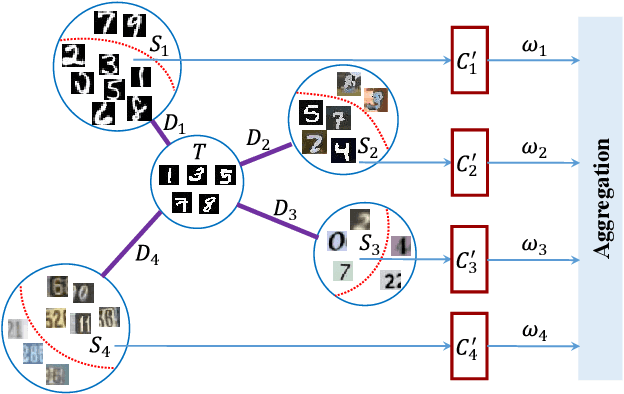
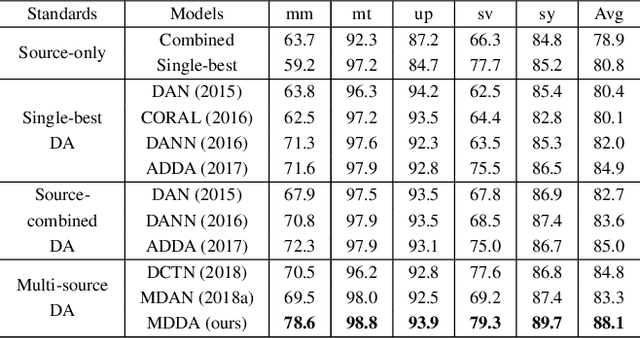
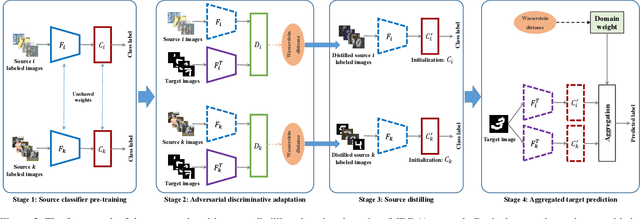
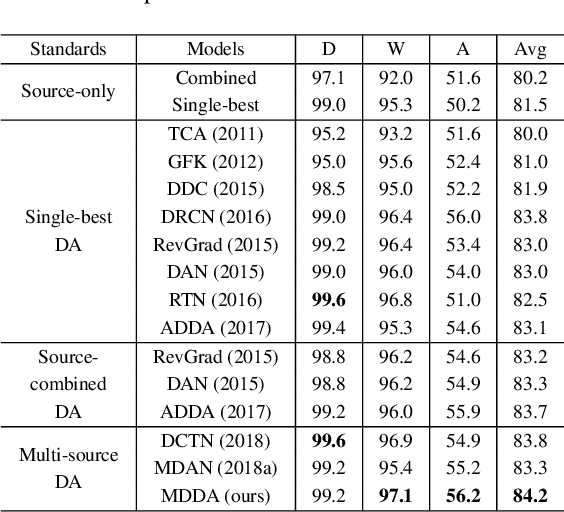
Abstract:Deep neural networks suffer from performance decay when there is domain shift between the labeled source domain and unlabeled target domain, which motivates the research on domain adaptation (DA). Conventional DA methods usually assume that the labeled data is sampled from a single source distribution. However, in practice, labeled data may be collected from multiple sources, while naive application of the single-source DA algorithms may lead to suboptimal solutions. In this paper, we propose a novel multi-source distilling domain adaptation (MDDA) network, which not only considers the different distances among multiple sources and the target, but also investigates the different similarities of the source samples to the target ones. Specifically, the proposed MDDA includes four stages: (1) pre-train the source classifiers separately using the training data from each source; (2) adversarially map the target into the feature space of each source respectively by minimizing the empirical Wasserstein distance between source and target; (3) select the source training samples that are closer to the target to fine-tune the source classifiers; and (4) classify each encoded target feature by corresponding source classifier, and aggregate different predictions using respective domain weight, which corresponds to the discrepancy between each source and target. Extensive experiments are conducted on public DA benchmarks, and the results demonstrate that the proposed MDDA significantly outperforms the state-of-the-art approaches. Our source code is released at: https://github.com/daoyuan98/MDDA.
Person Re-Identification via Recurrent Feature Aggregation
Jan 23, 2017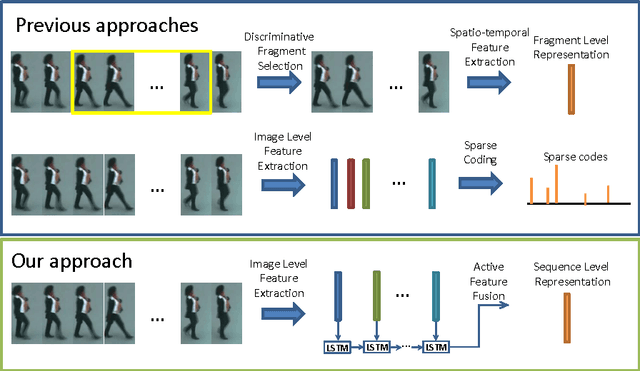



Abstract:We address the person re-identification problem by effectively exploiting a globally discriminative feature representation from a sequence of tracked human regions/patches. This is in contrast to previous person re-id works, which rely on either single frame based person to person patch matching, or graph based sequence to sequence matching. We show that a progressive/sequential fusion framework based on long short term memory (LSTM) network aggregates the frame-wise human region representation at each time stamp and yields a sequence level human feature representation. Since LSTM nodes can remember and propagate previously accumulated good features and forget newly input inferior ones, even with simple hand-crafted features, the proposed recurrent feature aggregation network (RFA-Net) is effective in generating highly discriminative sequence level human representations. Extensive experimental results on two person re-identification benchmarks demonstrate that the proposed method performs favorably against state-of-the-art person re-identification methods.
 Add to Chrome
Add to Chrome Add to Firefox
Add to Firefox Add to Edge
Add to Edge